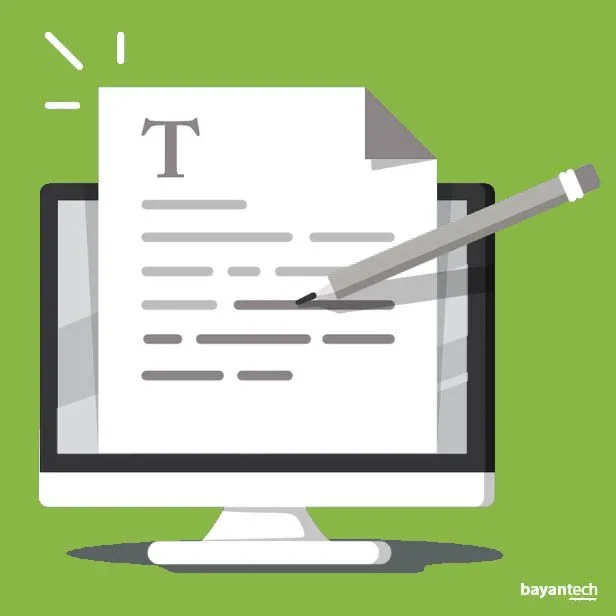Copyediting and proofreading are two different but complementary processes. And they’re both crucial in producing a quality text, be it an engineering paper, a collection of blog posts, or a press release. Whether you’re a translator, an editor at a traditional publisher, a PM at a Language Services Provider, or the person in charge of communications at your company, you need to know and implement copyediting and proofreading.
In this post, we’ll take a look at both copyediting and proofreading. We’ll especially focus on these practices in the context of the translation industry. You may be wondering: what is the difference between proofreading and copyediting? To answer that, we will compare both processes, copy editing vs. proofreading, and then dive deep into best practices for both.
Copyediting vs. Proofreading: Two Different but Complementary Processes
Professional translation is an arduous process. The longer the source material, the more important it will be to split and organize the workflow in detail-oriented tasks. Luckily, a professional translation company will most often have several people working on a single project. They won’t have to make the choice of copyediting vs. proofreading when working with your text. They’ll offer both.
Copy editing consists of scrutinizing a text closely to check grammar, syntax, wording, spelling, and word usage. Additionally, the copy editor may also review facts, improve style, and rewrite or re-order some paragraphs to make sure that the text “flows” properly. He or she will also verify internal consistency (terminology, register, general format, and jargon). This task becomes particularly important when the text at hand is technical or scientific. Copy editing is often referred to as “copyediting”. Both spellings are considered correct, and we’ll be using both throughout this article.
The job of a copy editor isn’t just to spell check and spot instances of terminology mishandling. When it comes to translation, the editor will compare the original text against the translation to check for inaccuracies, omissions, and mistranslations. At this stage of the editing process, it’s very important to have a clear idea of the text’s target audience and objective (What is it published for? What’s the goal?), since this will determine the tone, the degree of formality or informality (register), the jargon, and the choice of words. That is, the suitability and the “flavor” of the writing.
The copy editor is rarely concerned about the text’s final layout. So, they’re not expected to comment on that dimension of the text. Furthermore, they will be working with the draft, usually in an editable format, and not with the final version of the text. During this process, it is not unusual for the text to come and go between the editor and the writer a couple of times.
When the copy editor finishes his or her task, the proofreader will step in. Unlike their colleague, the proofreader will work with the final version of the text, the proof (the proofreader is literally the one that reads the proof). The proofreader focuses on eliminating formatting errors. The proofreader will pay special attention to the material’s layout, to guarantee the consistency of formal aspects.
The proofreader will also pay attention to spelling mistakes or any other blatant errors that the editor might have overlooked. But they won’t be particularly concerned about style or factual accuracy. Proofreading is the last instance of editing. So, the proofreader’s task is to make sure the text is ready to be delivered to the client. Their work can be understood as quality assurance, since they’re making sure that the text meets both internal and external standards. While he or she is entitled to make some corrections on their own, if the text has too many errors, the proofreader will most likely return it to the copyeditor.
Especially if you’re in need of editing services, you may be wondering: Comparing copyediting vs. proofreading, which editing stage is more costly?
Considering that copy editors are concerned with multiple dimensions of the text, their work tends to be more time consuming than that of their proofreading counterparts. Consequently, copy editing rates tend to be higher than proofreading rates. Copy editing can be charged by character, by word, or by the hour. Proofreading, on the other hand, is usually charged by the hour or by page, depending on both the subject matter at hand and company practices.
Especially if you’re looking into automatizing processes and reducing costs, you may be wondering: Is it possible to automate proofreading and copyediting?
Sign up to our newsletter to receive the latest blogs and news.
Can Copyediting and Proofreading Be Automated?
Word processors first incorporated auto-correct functions in the early to mid-90s. So, it’s reasonable to wonder if we can already automate copy editing and proofreading tasks, in order to streamline our translation process.
While some basic spelling and grammar mistakes can be detected by automated tools, there are some dimensions to the text that can only be perceived by humans.
Conceptual errors, factual errors, and errors consequent with not understanding the text’s function can’t be perceived by machines. So copyediting can’t be fully automated.
If we want to make this about copyediting vs. proofreading, well – proofreading can’t be automated either. Obvious grammar mistakes can be detected by tools that come with the word processor out of the box or by add-ons such as Grammarly. But mistakes that have to do with how the text is experienced are yet to be detected by machines.
Of course, as a copy editor or proofreader, you probably rely on the aforementioned automated solutions to do the heavy lifting. Like we noted in a previous article, comparing human translation to machine translation, automation does the heavy lifting, but the human touch is irreplaceable.
Copyediting Best Practices
Let’s take a look at some copyediting best practices. Having these practices in mind is ideal, whether you’re a copy editor yourself or someone working with a copy editor.
If you’re a copy editor, make sure you:
Check for typos and grammar errors. Use a spell-checker, and pay attention to details. Some grammar mistakes may be best detected with your ears. If something doesn’t sound quite right, don’t hesitate to read it aloud. Consult grammar rules and style guides to make sure the text adheres to them. This item also includes the correct and consistent use of punctuation.
Review the structure. You should verify the text is well organized and flows well. Make sure the text is clear, the sentences are easy to read, and the transitions between paragraphs and sentences facilitate understanding.
Pay attention to jargon, vocabulary, and tone. You should analyze if the tone of the text matches the target audience. Who is the target reader? What is the purpose of the text? Does the vocabulary and jargon used match the target reader? It is also crucial to ensure consistency of tone throughout the text and rectify any inaccuracy or inconsistency regarding jargon and vocabulary, especially if the text is technical. Another important aspect to consider is respecting the author’s voice, i.e. your work should be in the shadows. Improving a text does not mean overriding the author’s style or voice. Always stay true to the author; be their silent partner.
Don’t forget to fact check. If the text has hard data, you should check these are correct and from a valid source. Presentation also matters. Are there images, graphs, or infographics? Are data organized and well presented? As a copy editor, you should aim not only at well-written but also error-free content.
Don’t underestimate fatigue. It’s no news that fatigue affects your capacity to concentrate. Consequently, fatigue affects the quality of your production. You are more likely to overlook mistakes if you are tired. Especially if you’re working on a lengthy project, you should take breaks, get some rest, and recharge. Set realistic deadlines and organize your workload accordingly.
Proofreading Best Practices
That said, let’s move on to the next step, proofreading. It’s typically understood that a document that has been edited still needs to be proofread, as editing and proofreading are truly not the same. The copy editor works with a draft, while proofreading consists of revising the final version of a text to detect formatting errors. The proofreader may catch errors that were not missed by the editor, but that were caused by the mishandling of the source material in the formatting stage.
These details are obvious at first sight. That’s not all there is to proofreading. Let’s take a look at some proofreading best practices all proofreaders should implement for a swift and efficient process.
When recognizing a recurrent problem, scan for it throughout the text. If a formatting mistake or misspelling appears more than once, it may be recurrent across the material. Look for it specifically, and make sure no instance is left unchecked.
Check for homonyms and apostrophes. As a proofreader, any grammar or spelling mistake you catch is something that slipped under the copy editor’s radar. Small things like misplaced apostrophes are easy to miss, as well as homonyms, which slip through by cheating the editor’s ear.
Make sure that dates, times, units of measurement, and phone numbers are uniformly formatted. Especially if, for cultural adaptation’s sake, units of measurement were changed, the text may include some irregular formatting in this area. Make sure dates, times, and other numbers look the same across the text.
Copyediting vs. Proofreading in the Translation Industry
As we mentioned a few paragraphs above, it’s rarely about copyediting vs. proofreading for translation companies. It’s usual to offer both types of editing services as part of the translation. This is known as TEP (translation, editing, and proofreading) in the jargon. While the three services can be sold separately, it’s highly recommendable to hire translation services that include editing and proofreading.
Let’s take a final comparative look at copyediting vs. proofreading.
In summary, the copy editor’s tasks involve:
- Working with the original text and comparing it against the translation and searching for meaning errors.
- Checking the accuracy and consistency of spelling, grammar, punctuation, syntax, and technical vocabulary throughout the text.
- Localizing the text. This includes ensuring the correct variety of the language is used according to the target audience (e.g. Colombian Spanish, European Spanish, or International Spanish).
- Acting as cultural consultants since they are specialists in both the source and target languages and thus can suggest changes associated with the adequacy or naturalness of some idioms or word usage.
Meanwhile, the proofreader:
- Re-checks if there are still serious mistakes overlooked by the editor.
- Checks for omissions, repetitions, format, figures and measurements, tag placements and/or omissions, layout consistency, and punctuation.
Key Takeaways
While copyediting and proofreading are two different types of editing, both are essential to creating a high-quality text. In the translation industry, editing and proofreading services ensure that the translation has the same quality as the original text. A poorly edited translation can have disastrous effects, depending on its context. In the medical industry, the results of a translation that wasn’t properly fact-checked and compared to the source material can be the misunderstanding or loss of important information. If the text in question has marketing purposes, poor copyediting or proofreading can result in hurting your brand’s image or a decrease in sales.
Copy editors pay attention to the content to make sure it’s easily readable, stylistically consistent, and factually correct. Proofreaders look at the finished product as a whole and take care of formatting issues.
Comparing copyediting vs. proofreading, we get to understand that both copy editors and proofreaders contribute immensely to the quality of a text. If you need to hire a translation company, check if both proofreading and copyediting services are offered as part of the translation process. This, among other factors, will ensure the overall quality of the work.














